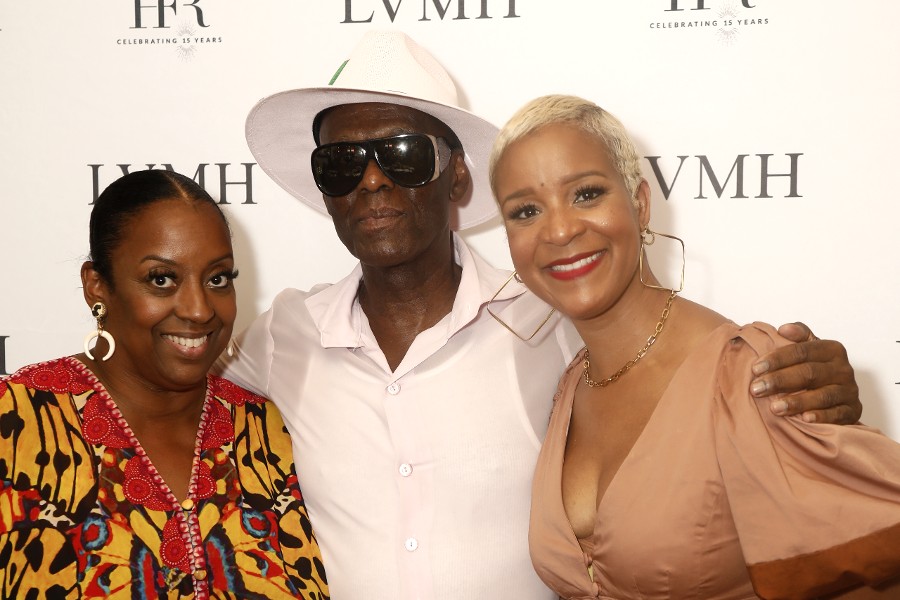
The significance that swords played in warfare was significantly diminished by the 1860s.
Despite the rapidly-developing rifles that would eventually replace them entirely, swords continued to hold an important role in the American Civil War.
Swords played a significant role during past wars, in other cultures like Japan, during the 15th to 16th century, Wakizashi swords are as popular as the swords that are listed below.
In this article, we will be discussing all the most important swords that were used in the American Civil War. You will find out the most effective ones and the ones that were barely used. We will finish up by examining how common the sword fights actually were in this war.
The 1860 Light Cavalry Saber
The 1860 Light Cavalry Saber with its scabbard. (Image Credit – US Army Heritage)
This is the most distinguishable sword of the American Civil War: the 1860 Light Cavalry Saber can be easily recognized when compared to all the other sword types from around the world.
This sword was based on the heavy cavalry saber from 1840, but it was made shorter and lighter to make it more comfortable to use. The 35-inch (90-cm) steel blade of the light cavalry saber was curved. It had a brass hilt, and a hand guard that spanned the entire length of the handle down to the pommel. It was carried in an iron sheath or scabbard.
This saber was carried by almost every soldier on a horse. It was mostly used during the civil war cavalry charges, when soldiers rode their horses straight into a formation of foot soldiers, using their speed and height to cut through the enemy lines. This charge was effective because most foot soldiers used muskets that took a long time to reload: though the cavalry would be charging directly at a line of muskets, the response fire was slow enough to make the charge work.
The saber was curved to strengthen its slash at high speeds. This type of sword is the most popular from the American Civil War, and can be often seen in many Western movies or modern LARP and reenactment events.
The 1860 Naval Cutlass
The 1860 American Cutlass. (Image Credit – Cowan’s Auctions)
The cutlass from 1860 was made for the navy. It’s often mistaken for a saber, which is easy to understand given the resemblance. Though they share a similar silhouette, the details make the 1860 naval cutlass a very different sword.
Like the cavalry saber, the blade of the naval cutlass is curved. However, it is much steadier and straighter, as well as overall wider than the blade of the saber. It’s only 26 inches (66 cm) long: significantly shorter than the saber as well. The largest change, though, is in the handle; the 1860 cutlass has a full brass plate to protect the hand, as opposed to the thinner bar of the saber.
The idea was to make it as effective as possible in close quarters. It was short enough to both thrust and slash in a fight, but also had a flat profile when worn on the hip. That way, when the sword was sheathed, the wearer could move easily in tight spaces — like belowdecks on a ship. The cutlass was also heavy enough to serve as a useful weapon and a rigging tool.
The Mameluke
The long Mameluke with its scabbard. (Image Credit – Military Americana)
The historic Mamluk soldiers of Egypt gave their name to the Mameluke, designed with the Egyptians’ weapons in mind. Europeans were so interested in these warriors that many armies, including the American and British, copied their weapons and styles.
Around 1825, the officer’s Mameluke sword was about 37 inches (95 cm) long from tip to pommel, and the blade itself was about 32 inches (83 cm) long. There are two models of the Mameluke sword that was used in the American Civil War.
In general, the blade of the 1825 model is plain, but the blade of the 1875 model is etched with decorative designs. It is a very popular modern sword, and the modern blades are etched with things like flower sprays and military trophies in gold. Usually, it has a scroll with the words “United States Marines” on it.
1850 Army Staff & Field Officers Sword
A replica of an 1850 Army Staff sword. – [Image Credit – WikiMedia]
Even though the rules let officers carry other swords, this type was unquestionably the most popular. In the years before the U.S. Civil War numerous Confederate officers, including General Robert E. Lee, carried this sword.
It is around 35 inches (80 cm) long, and unlike some of the other blades discussed here, this was a well-rounded sword. Its versatile design made it popular among officers.
It was designed for officers with the rank of major or higher, but since swords were private purchases and not government-issued, there was nothing to stop officials of any rank from owning one. The Staff and Field Officers’ Sword is different from the Model 1850 Army Foot Officer’s Sword.
1840 Cavalry Saber
The 1840 Cavalry Saber, or the “Wrist Breaker”. – [Image Credit – WikiMedia]
The 1840 Cavalry Saber was known amongst the soldiers fighting in the civil war as the “wrist breaker.”
The wrist breaker looked a lot like the French hussar’s saber from 1822, and was probably based off of its design. The Model 1840 Cavalry Saber has a ridge or crest around its quillon, a leather handle wrapped in wire (instead of grooves cut through into a wooden handle, and a flat, slotted throat. It is 44 inches (110 cm) long and has a blade that is 35 inches (89 cm) long. It weighs about 2.5 lbs (1.2 kg).
Its production ceased in 1858 because it wasn’t comfortable to use or useful in a fight: the wrists being broken weren’t the enemy’s. The 1840 Cavalry Saber had substitutes available that proved better in combat.
1840 Artillery and Light Artillery Saber
The 1840 Artillery Saber with its scabbard. (Image Credit – Collectors Weekly)
The 1840 Light Artillery Saber has a brass hilt and knuckle bow that is about 6 inches (15 cm) long. The grip is wrapped in leather and bound with brass wire, and the blade is 32.25 inches (83 cm) long. This civil war sword does not have a basket.
This saber has a flat brass handle, a leather grip wrapped in brass wire, and a steel or leather scabbard. It’s different from other cavalry swords, both shorter and more sharply curved.
1832 Dragoon Saber
The Dragoon Saber of 1832. (Image Credit – Kult of Athena)
The saber came from the European backsword, which was a single-edged, straight sword with something like a basket. It frequently has a blade with a slight curve and a knuckle guard that is quite big. This saber, however, is straight and double-edged.
The saber was first used by Hungarian cavalry in the 10th century, but it was at its best during the Napoleonic Wars and the American Civil War in the 19th century.
1832 Foot Artillery Sword
The straight 1832 Foot Artillery Sword, sometimes known as “the musician sword”. – [Image Credit – WikiMedia]
This sword, unlike the other swords used in the Civil War, had a blade with no curve.
The hilt of the U.S. Model 1832 foot artillery short-sword is made of solid brass and is 6 inches (15 cm) long. The crossguard is 4 inches (10 cm), and the blade is usually 19 inches (48 cm) long. The U.S. ordered this model of sword from Massachusetts throughout 1832.
As a personal sidearm, it was meant for the standard or foot artillery units of the Union Army. Foot artillerymen used it until 1872. From 1832 to 1840, it was also the sword that sergeants and musicians in infantry regiments were given.
Before 1861, most artillery brigades were trained and outfitted as infantry, so it made sense to give both types of army units the same kind of weapon.
The Bayonet
Swords attached on to rifles to be used as Bayonets (The American Civil War a Military History)
The bayonet is a blade attached to the ends of the rifles that were used in the American Civil War. Although it might not be considered a sword, the ones that were used in this civil war were very lengthy. Soldiers could be seen fighting bayonet on bayonet and actually clashing their blades.
Normally, the bayonet is mostly used for thrusting, and it saw a lot of usage in the civil war.
The Bowie Knife
The Short Bowie Knife. (Image Credit – National Museum of American History)
The Bowie Knife came with a lot of variation in size: the longer type was almost as long as a sword, and is worth considering in that context. The blade of a short bowie knife was around 5 inches (13 cm), while the longer type averaged at 12 inches (30 cm) long. Both were about 1.5 inches (4cm) wide. The Bowie Knife could really vary, however, and some of the bigger ones measure up at 24 inches (60 cm) long!
One side of the blade is sharp, and the indented tip is called a “clip point.” It was mostly used as a backup weapon when no other option was available. A lot of the soldiers in the Civil War had one strapped to their sword belts.
How Common Were Swords in the American Civil War?
Civil War soldiers with their swords. (Image Credit – Weapons and Warfare)
Not too common.
By the time the Civil War began, this was an old way to fight. Military strategists put a lot of faith in the capabilities of cold steel to steer the enemy off the field, but in reality, very few battles got that close. If a fight did end up in close quarters, the bayonet generally took things from there: the days of dramatic sword fights on the field of battle were mostly over.
Cavalry still used their swords quite a bit, but by the time of the American Civil War the sword was almost useless for infantry fighters. Swords became (and remained for a long time) a costume piece for pageantry: officers used them to show who was in charge, and to send signals to regiments like a baton.
References:
Ward, G. C., Burns, R., & Burns, K. (1992, December 31). The Civil War. In An Illustrated History. Knopf. https://doi.org/10.1604/9780679742777
Genoways, T. (2009, September 15). Walt Whitman and the Civil War. In America’s Poet During the Lost Years Of 1860-1862.
Masur, L. P. (2011, April 28). The Civil War. In A Concise History.
Streissguth, T. (2001, January 1). The Civil War. In The South. Greenhaven Press, Incorporated. https://doi.org/10.1604/9780737704082
Robertson, J. I. (1992, December 1). Civil War! In America Becomes One Nation. https://doi.org/10.1604/9780394929965
Ojeda, A. (2003, January 1). The Civil War. In 1850-1895. Greenhaven Press, Incorporated. https://doi.org/10.1604/9780737711400
D. (2015, January 19). The Civil War. In A Visual History. DK.
Yomtov, N. (2016, August 15). Civil War Weapons. Essential Library.
Smith, G. (2022, September 13). Civil War Weapons. In An Illustrated Guide to the Wide Range of Weaponry Used on the Battlefield.
Colby, C. B. (1962, September 1). Civil War Weapons. In Small Arms, and Artillery of the Blue and Gray. Putnam Adult. https://doi.org/10.1604/9780698300460
Pritchard, R. A. (2003, September 1). Civil War Weapons and Equipment. https://doi.org/10.1604/9781585744930
Bezdek, R. H. (2009, May 15). Swords of the American Civil War. https://doi.org/10.1604/9781581606119
Become a Harlem Insider!
By submitting this form, you are consenting to receive marketing emails from: Harlem World Magazine, 2521 1/2 west 42nd street, Los Angeles, CA, 90008, https://www.harlemworldmagazine.com. You can revoke your consent to receive emails at any time by using the SafeUnsubscribe® link, found at the bottom of every email. Emails are serviced by Constant Contact








